Thinking about visiting Bolivia with your family?
Bolivia wasn’t originally on our radar, but it turned out to be the biggest surprise of our entire world trip. It quickly became one of our favourite destinations.
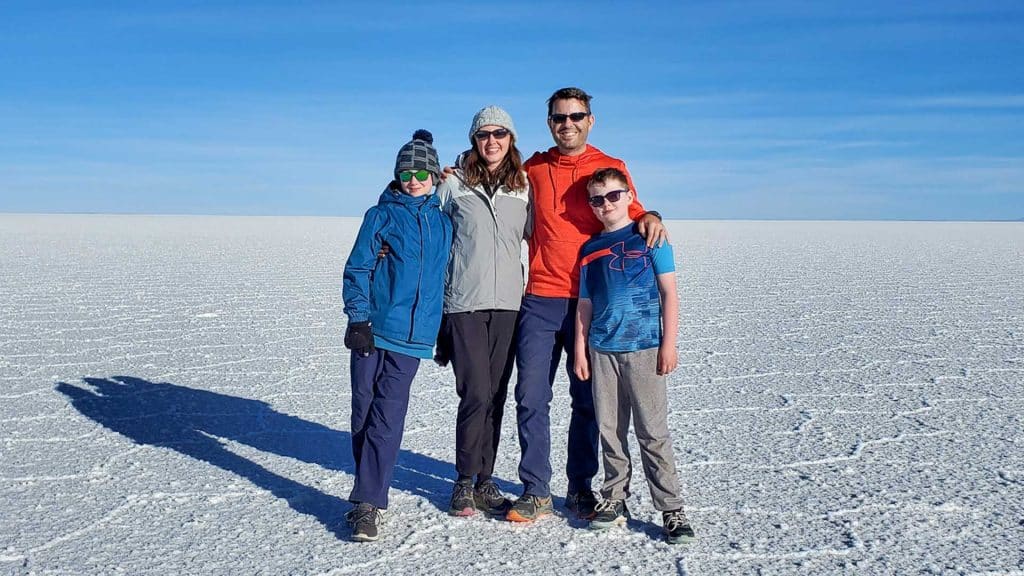
From the bustling streets of La Paz to the steamy rivers of the Amazon, from dinosaur trails in Toro Toro to the surreal beauty of the Uyuni Salt Flats, our time in Bolivia was fast-paced and filled with one adventure after another. Each stop brought something completely new, and deepened our appreciation for a country rich in diversity, culture, and wild beauty.
If you’re planning a family trip to Bolivia, this 27-day itinerary offers a blend of cities, jungles, mountains, and salt flats, with space for epic experiences and the occasional pause to catch your breath.I
Getting Around Bolivia: Flights, Buses, and Patience
Bolivia is a country of contrasts—from the high peaks of the Andes to the lush lowlands of the Amazon. With these dramatic landscapes come equally dramatic travel challenges. Overland travel is possible, but rough roads, minimal infrastructure, and unpredictable weather can make even short distances feel long.
For most intercity travel, we recommend flying. Domestic flights are generally affordable, and flying between hubs like La Paz, Sucre, Santa Cruz, and Cochabamba can save you hours of bumpy bus travel.
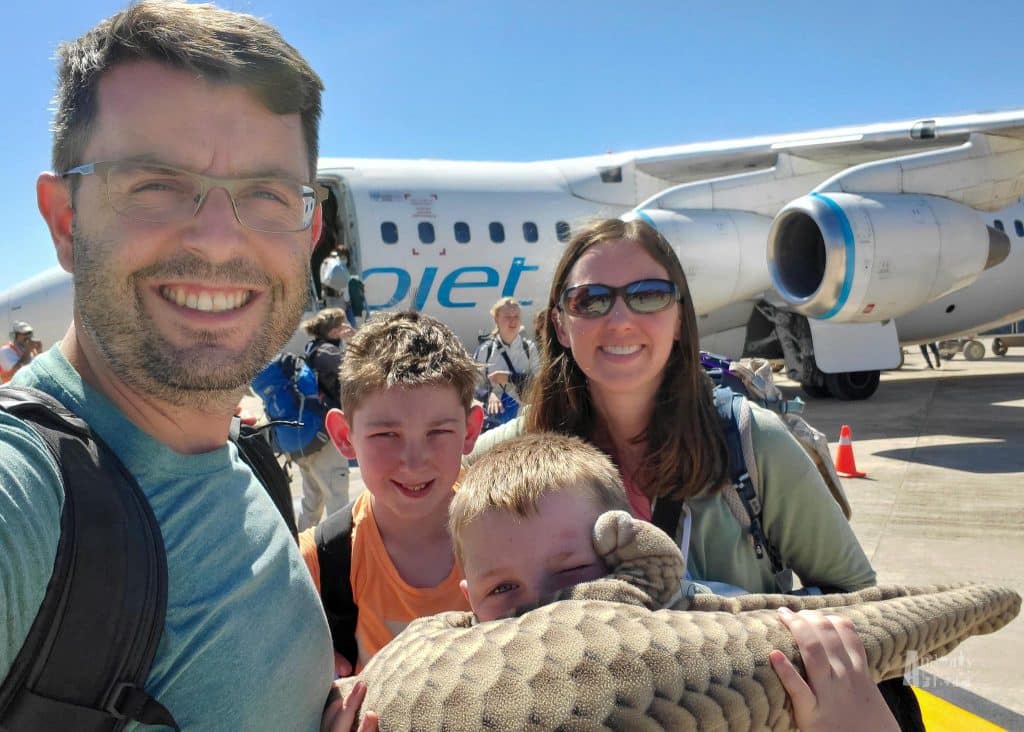
Note for Amazon-bound travellers: Flights to and from Rurrenabaque are frequently delayed or cancelled due to weather and aircraft maintenance. While you can get there by road, it’s a long and notoriously dangerous journey and is not recommended for families.
Flexibility is key in Bolivia. Things often don’t run on time, and weather can throw a wrench into even the best-laid plans. Avoid booking tours on travel days, and always build a buffer for the unexpected.
Days 1–5: La Paz – High Altitude and Cable Cars
Set dramatically in a steep valley at nearly 3,650 metres (12,000 feet), La Paz is the world’s highest capital city—and it feels like it. The altitude hits fast, so we gave ourselves time to adjust, moving slowly for our first few days.
Highlights included riding the city’s extensive cable car network for sweeping views, strolling through colonial plazas, spotting vibrant street art, and escaping to Valle de la Luna—a surreal, eroded landscape just outside the city. For more details, Family Guide to La Paz: A Flexible 5-Day Itinerary
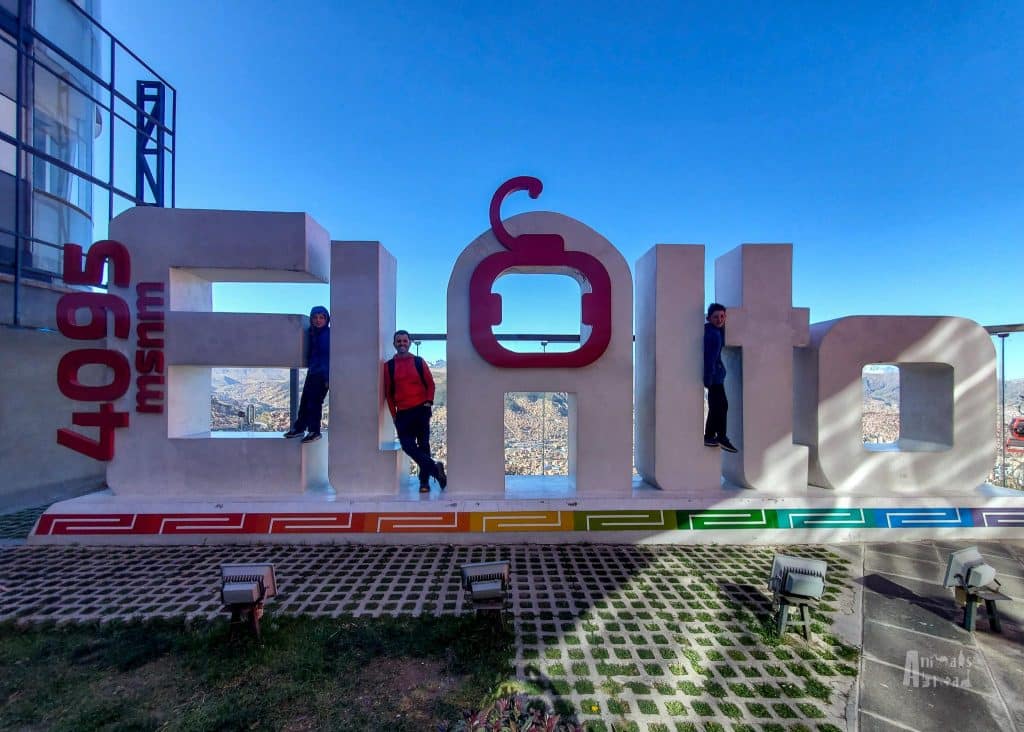
Flexibility is the key to enjoying La Paz, especially as a family. Go slow, rest often, and soak in the experience at your own pace. For more advice on adjusting to the elevation, read our post: Breathless in Bolivia: Managing Altitude Sickness as a Family
Day 6: Journey to the Pampas (via Rurrenabaque)
We flew from La Paz to Rurrenabaque, the gateway to Bolivia’s Amazon region. It was an adventure, complete with plane delays, limited infrastructure, and plenty of nerve-racking moments.
For the full story, read, Travelling to the Amazon: An Adventure in Itself
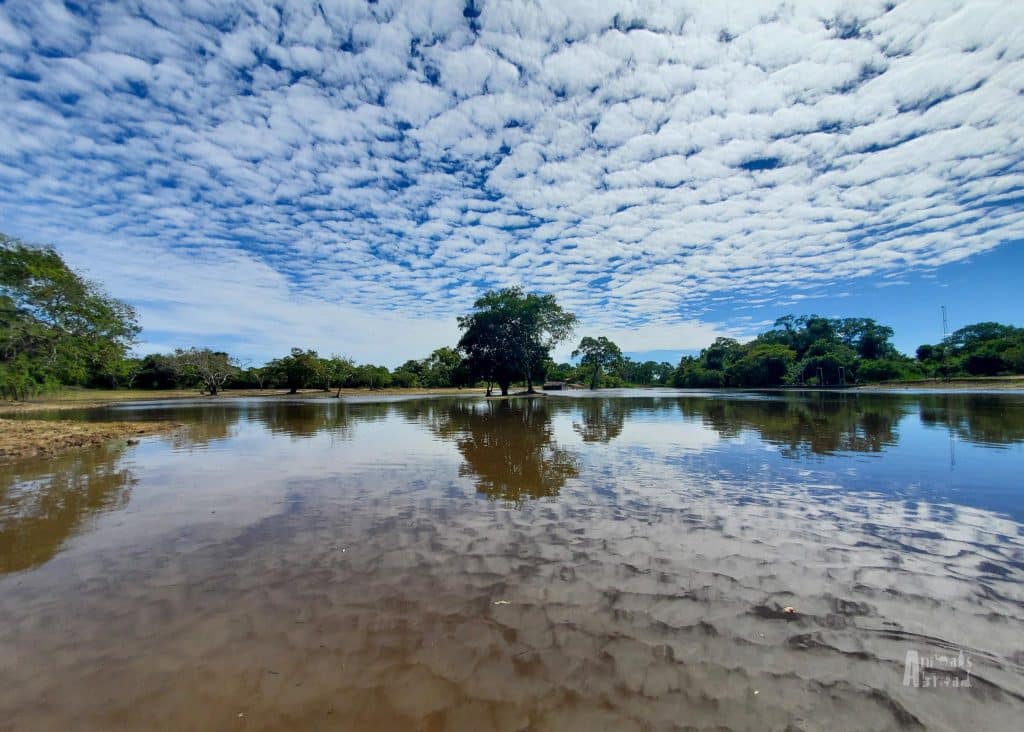
Day 7: Amazon Pampas – River Safari
We explored the Pampas—a vast wetland teeming with wildlife—by boat. Gliding slowly down the river, we floated alongside caiman, watched pink dolphins playfully pop their heads out of the water, fished for piranhas, spotted families of capybaras grazing on the shore, and came up close with a cheeky troop of yellow squirrel monkeys. The stillness of the water and closeness to nature made this a wildlife experience unlike any other.
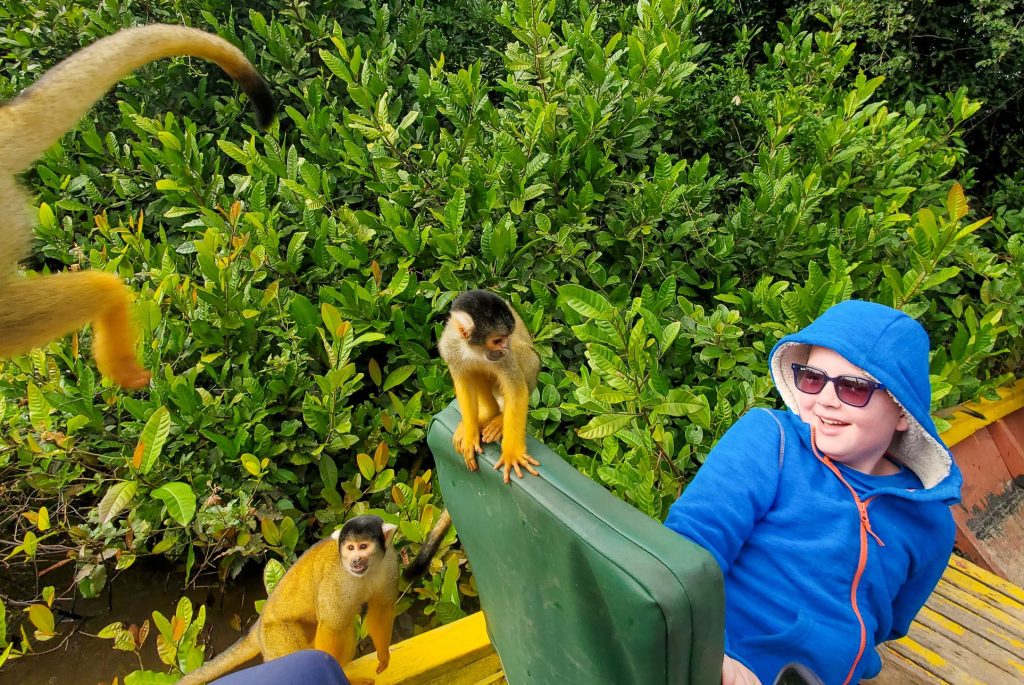
Days 8–10: Madidi National Park – Deep into the Jungle
The next morning, we boarded a canoe-like boat and headed upriver to the Madidi National Park. In contrast to the Pampas, Madidi is a dense jungle area surrounded by forested mountains, and at the heart of it all was a peaceful lake—an unexpected sight deep in the Amazon. Over three days in the park, we explored the jungle on guided treks, including a memorable night walk, and glided across Santa Rosa Lake in a canoe.
For our itinerary and tips on taking kids into the Amazon, read our full post, Exploring Bolivia’s Amazon: Pampas and Madidi National Park.
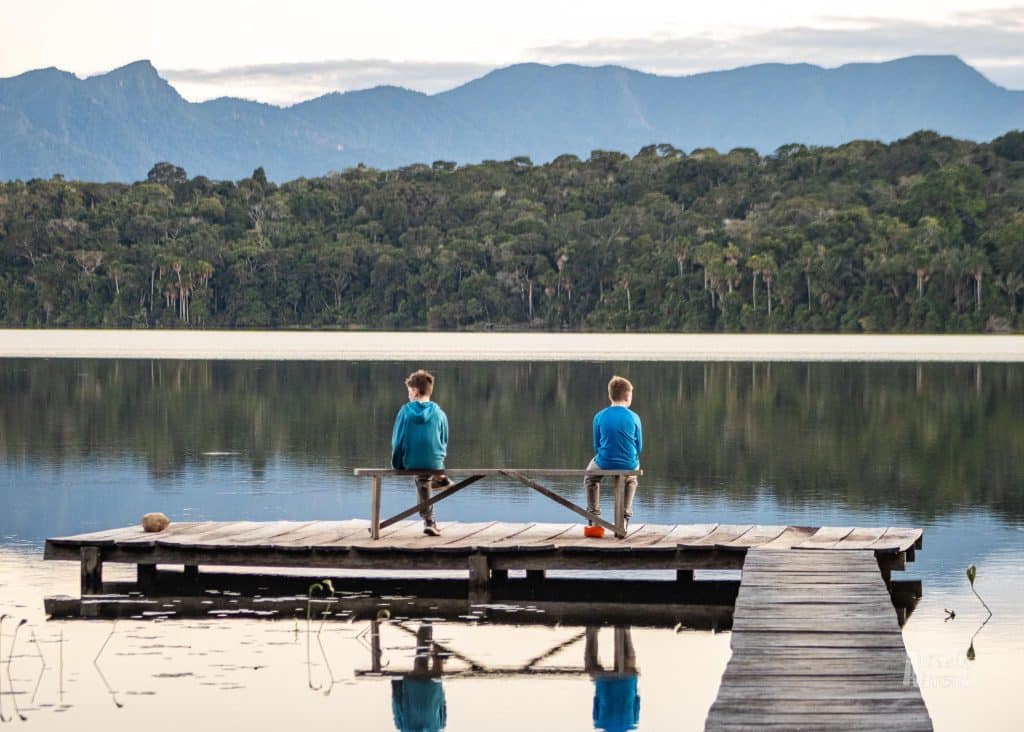
Day 11: Travel Day – Rurrenabaque to Cochabamba
We flew back to La Paz, then to Cochabamba—the nearest hub for reaching Toro Toro National Park, our next adventure.
Days 12–13: Toro Toro National Park
Often called Bolivia’s “Jurassic Park,” Toro Toro is a hiker’s paradise. Nestled on the eastern slope of the Andes Mountains, we explored canyons, caves, and trails marked by fossilized dinosaur tracks. For adventurous families, this park is a must.
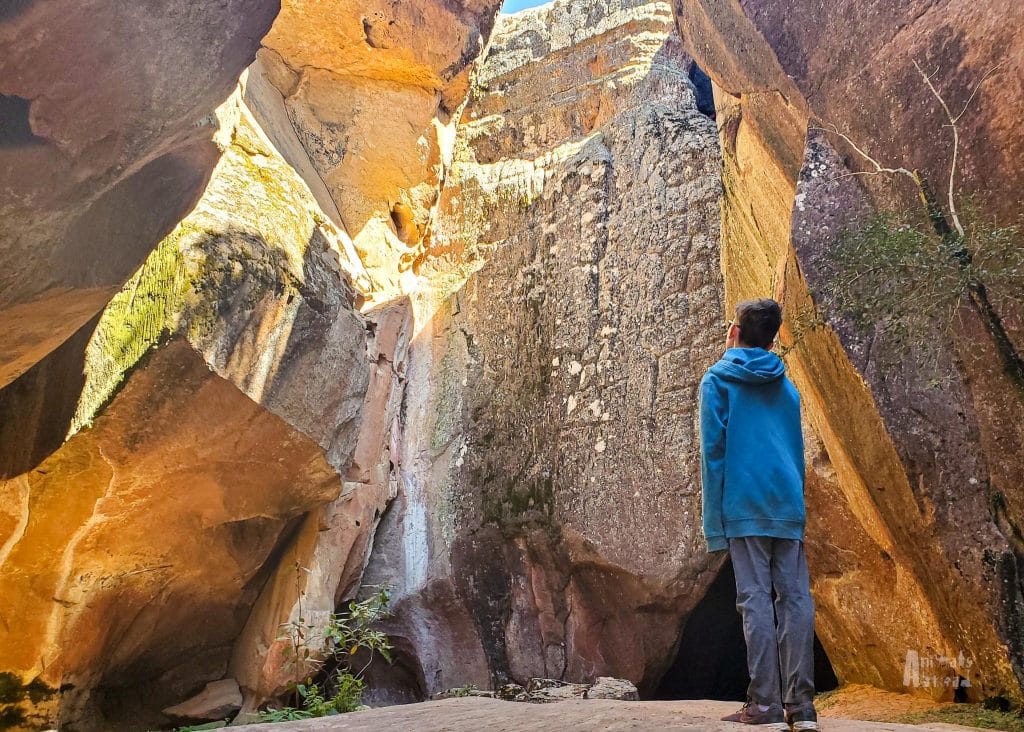
Day 14: Exploring Cochabamba
Before moving on, we spent a day exploring Cochabamba. Known for its vibrant murals and relaxed vibe, it offered a nice change of pace. We visited Cristo de la Concordia, a massive Christ statue overlooking the city, stopped at a park, and wandered through its colourful streets.
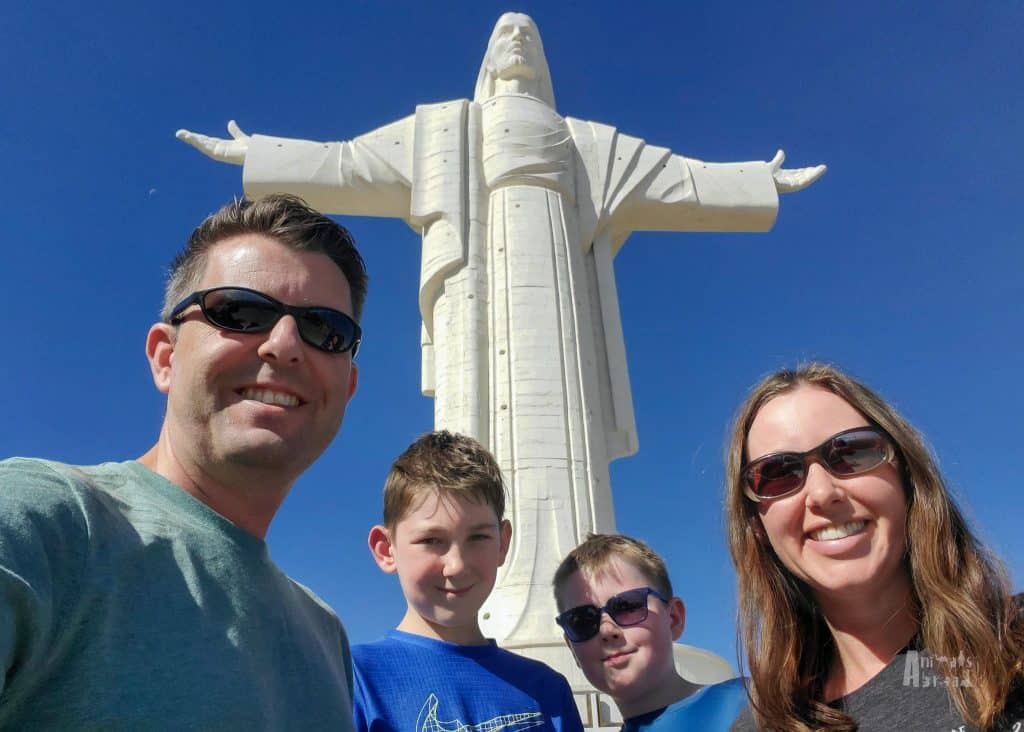
Day 15: Travel Day – Cochabamba to Santa Cruz
A short flight took us to Bolivia’s largest city and our launching point for a long-anticipated wildlife experience.
Day 16: Santa Cruz City Stroll
Santa Cruz is Bolivia’s largest city and economic hub, often used as a gateway to wildlife adventures in the Amazon lowlands. While it wasn’t a major sightseeing stop, we explored the city, visited Plaza 24 de Septiembre, admired the cathedral, and snapped a photo at the (disputed) Centre of South America marker.
If you have more time, Santa Cruz is also a convenient base for visiting Amboro National Park, the dunes at Lomas de Arena, or the ruins near Samaipata.
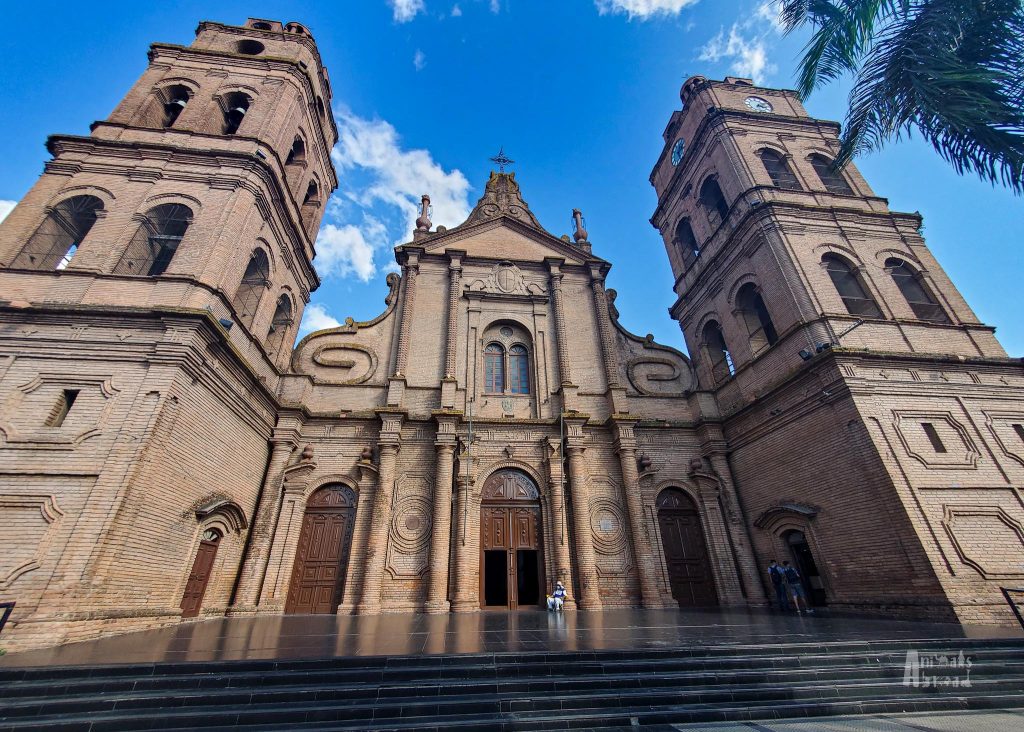
Days 17–19: Jaguarland – A Family Safari in Bolivia
Jaguarland was one of the most unique wildlife experiences of our trip. This reserve is considered one of Bolivia’s top wildlife hotspots. And the second-best place in the world, after the Pantanal in Brazil, to see jaguars in the wild. Over the next three days, we tracked big cats, spotted sloths and monkeys in the trees, watched playful families of capybaras cross the roads, and were mesmerized by the abundance of bird life.
For our full Jaguarland Itinerary and what to expect in the wild, read our full post, Chasing Jaguars in Bolivia: A Family Safari in Jaguarland.
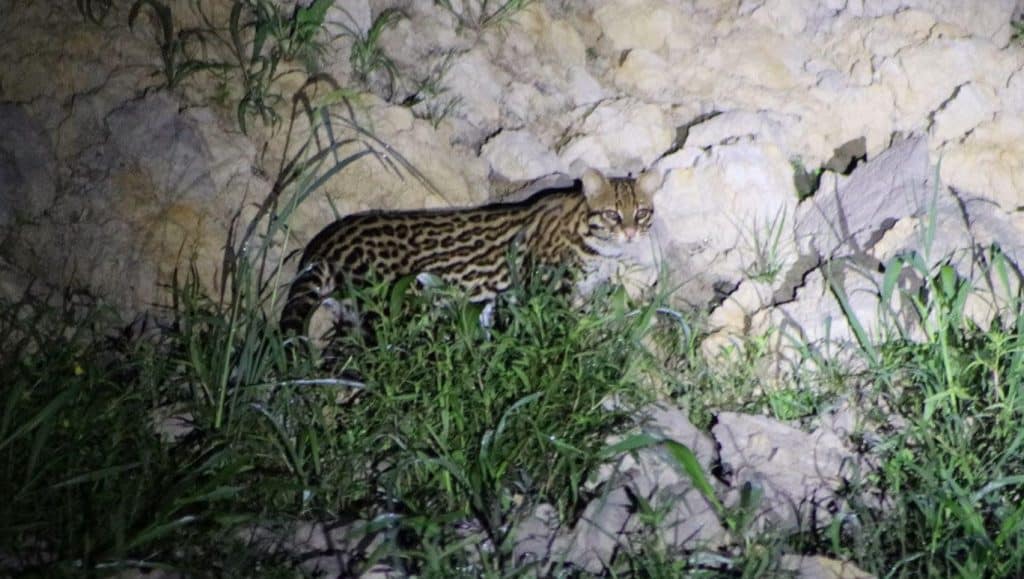
Day 20: Travel Day – Santa Cruz to Sucre
After our safari, we flew to Sucre, often considered Bolivia’s most beautiful city.
Day 21: Sucre – Colonial Charm and Chocolate
Known as the Ciudad Blanca, Sucre has gleaming white buildings, cobblestone streets, and lively squares. We spent a relaxing day wandering the historic centre, sampling artisan chocolate, and watching the dancing “zebra” guide traffic.
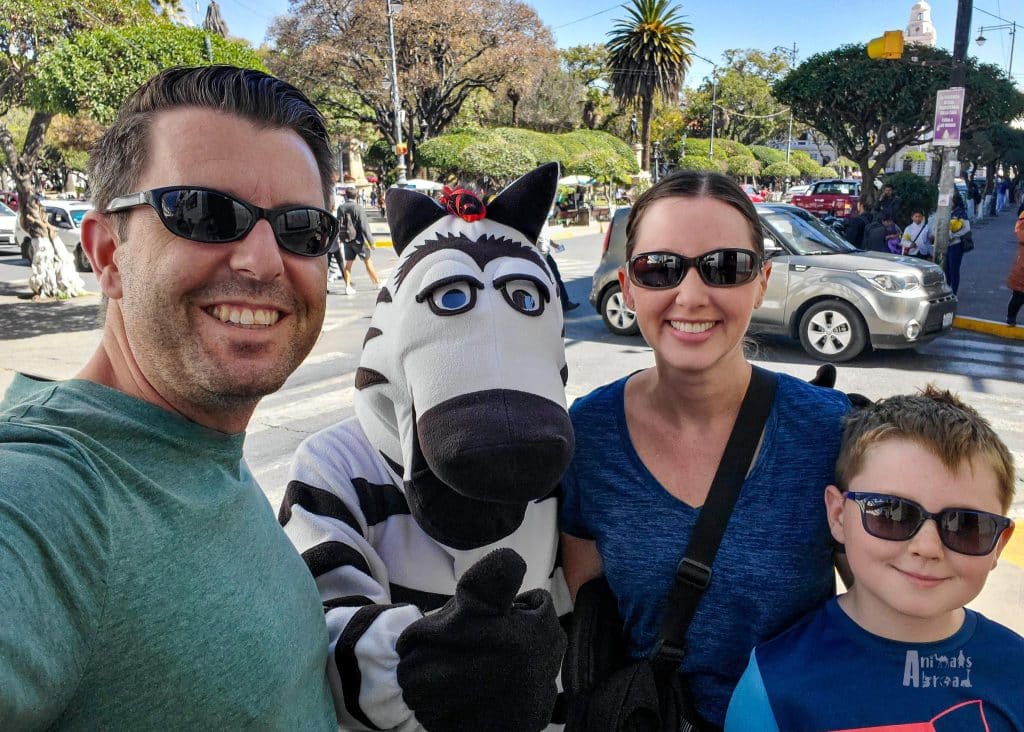
Day 22: Parque Cretácico & Overnight Bus to Uyuni
Parque Cretácico, just outside Sucre, features one of the world’s largest collections of dinosaur tracks—over 5,000 fossilized prints preserved on a cliff face. Descending into the quarry to stand beside the ancient tracks was a highlight, and the kids especially loved the life-size dinosaur models and brushing off their own “fossils” in the children’s discovery center.
That night, we boarded an overnight bus to Uyuni, settling into our comfy reclining seats for a wild ride to Bolivia’s famous Salt Flats.
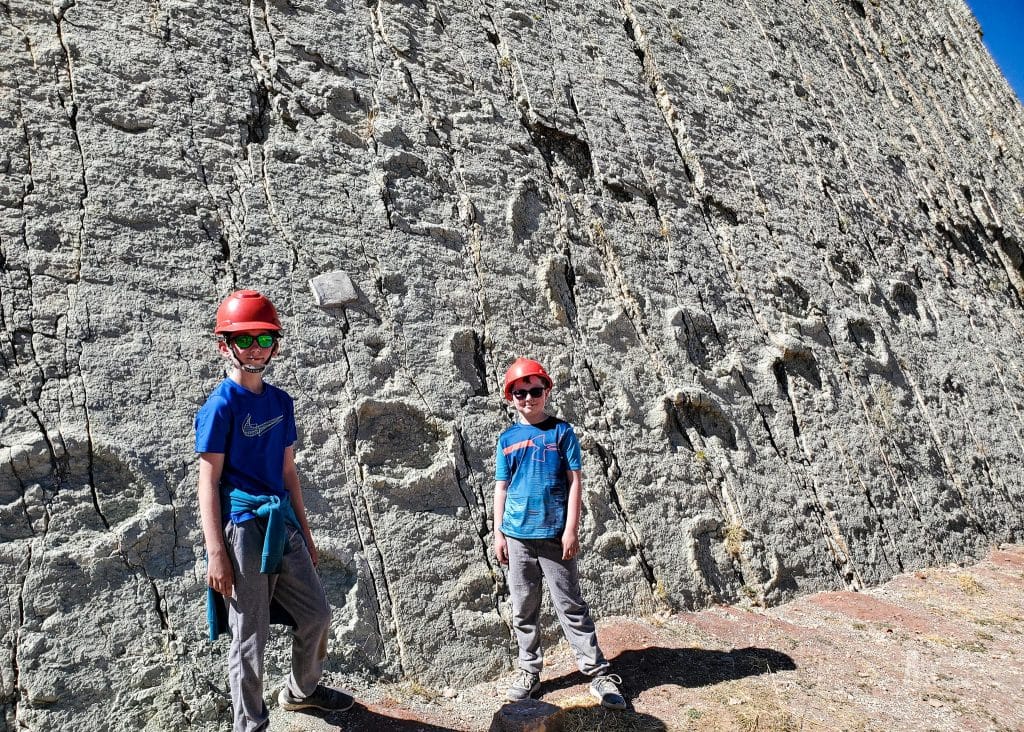
Day 23: Uyuni – Rest and Recharge
Despite the comfortable seats on our overnight bus from Sucre, we had little sleep and arrived in Uyuni at 4:30 a.m. After a quick nap at our hostel, we spent the rest of the day exploring the quiet streets of Uyuni, shopping for warmer clothes, and getting some real rest before the big adventure.
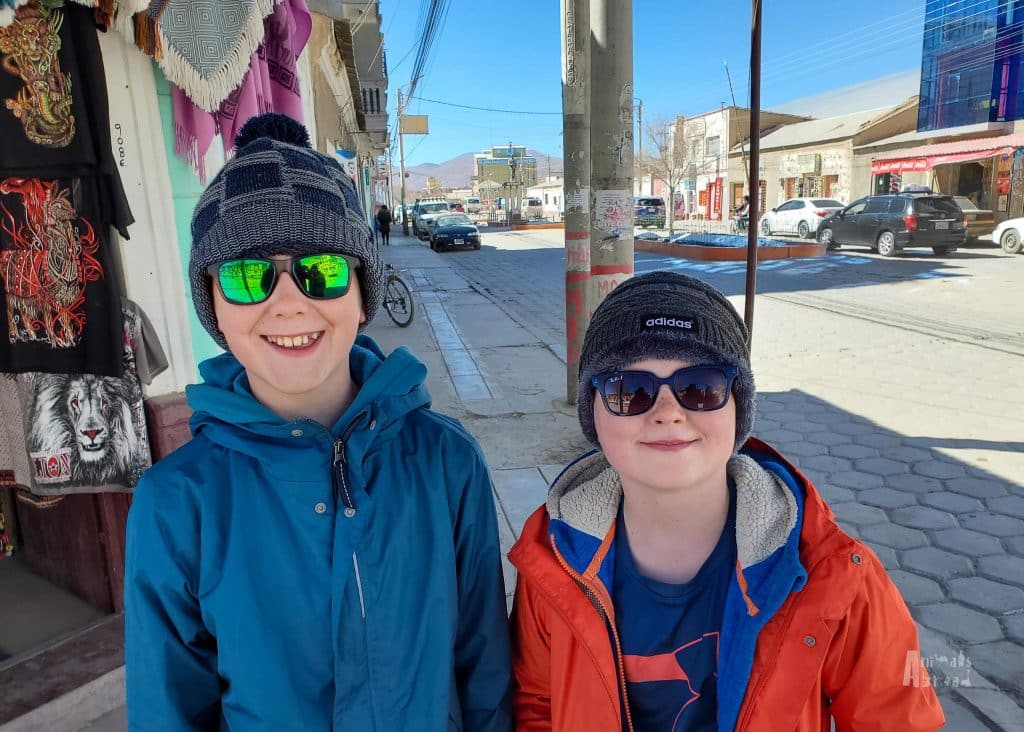
Days 24–26: Uyuni Salt Flats – A Surreal Three-Day Tour
We wrapped up our time in Bolivia with a three-day tour through the stunning Salar de Uyuni—a landscape unlike anywhere else we’ve been. Every stop offered a new marvel, from endless salt flats to flamingo-filled lagoons, geysers, and hot springs. Despite cold nights and high altitude, the kids loved it—and so did we.
For our detailed Itinerary and Tips on Taking Kids to Uyuni, read our full post, Bolivia’s Uyuni Salt Flats with Kids: A Family Adventure.
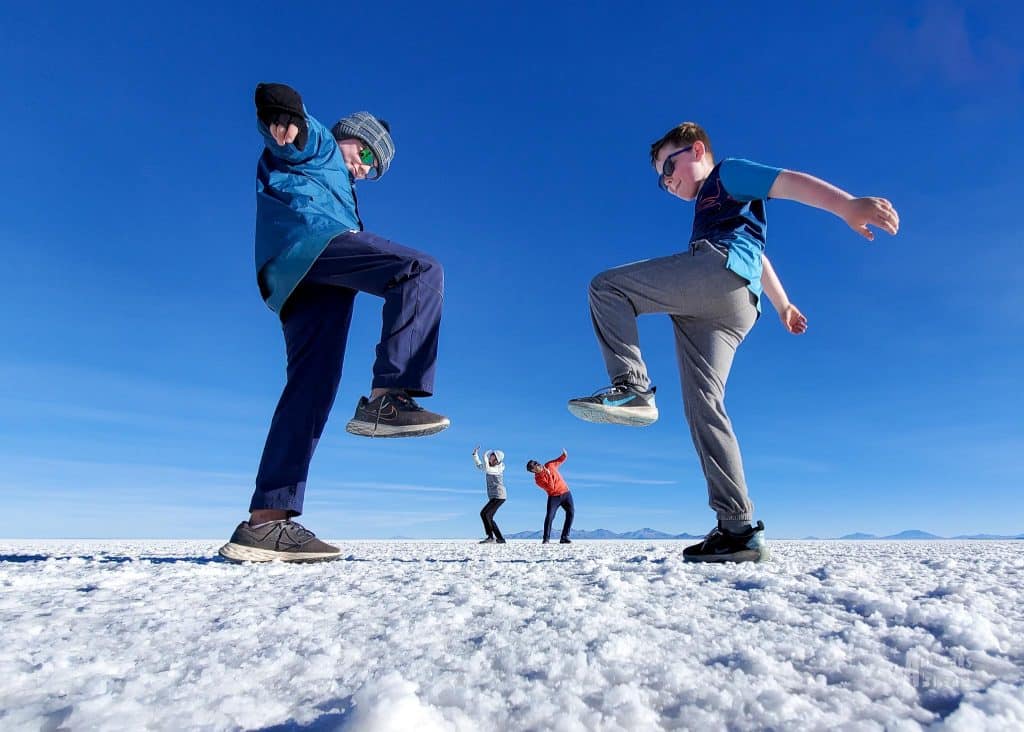
Day 27: Final Day in La Paz
We returned to La Paz via overnight bus and spent our last day enjoying some creature comforts before our 3 a.m. flight. We took one last ride on the Teleférico, then headed to the Multicine Complex where the kids played video games, we grabbed a bite at the food court, and finished with a family movie.
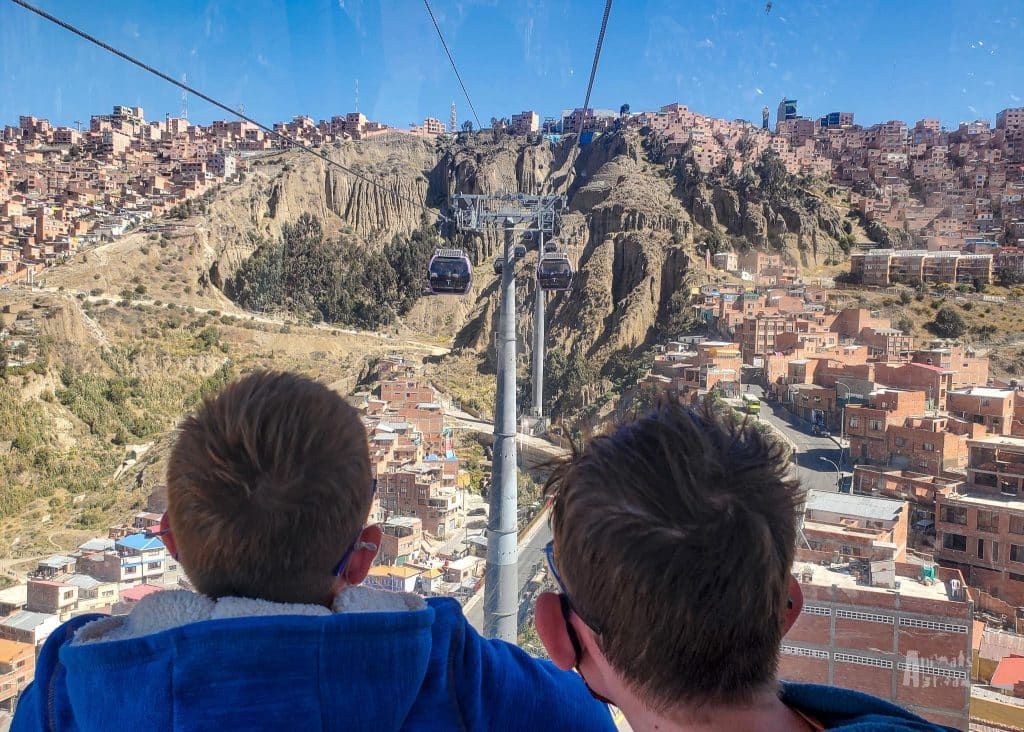
Tips for Planning a Family Trip to Bolivia
Altitude adjustment is key: Plan rest days and take it slow when arriving in high-altitude cities like La Paz and Uyuni. Medication (like acetazolamide) and hydration can help.
Book flights, not buses: Domestic flights save time and stress. Use buses only when necessary or for shorter routes.
Be flexible: Delays are common. Avoid scheduling tours or tight connections on travel days.
Pack for all seasons: You’ll need layers for the mountains and breathable clothes for tropical lowlands.
Consider guided tours: Especially for the Amazon and Uyuni, having a guide made all the difference in navigating logistics and enriching the experience for the whole family.
Embrace the unexpected: Bolivia isn’t always easy, but rewards patience, curiosity, and a sense of adventure.
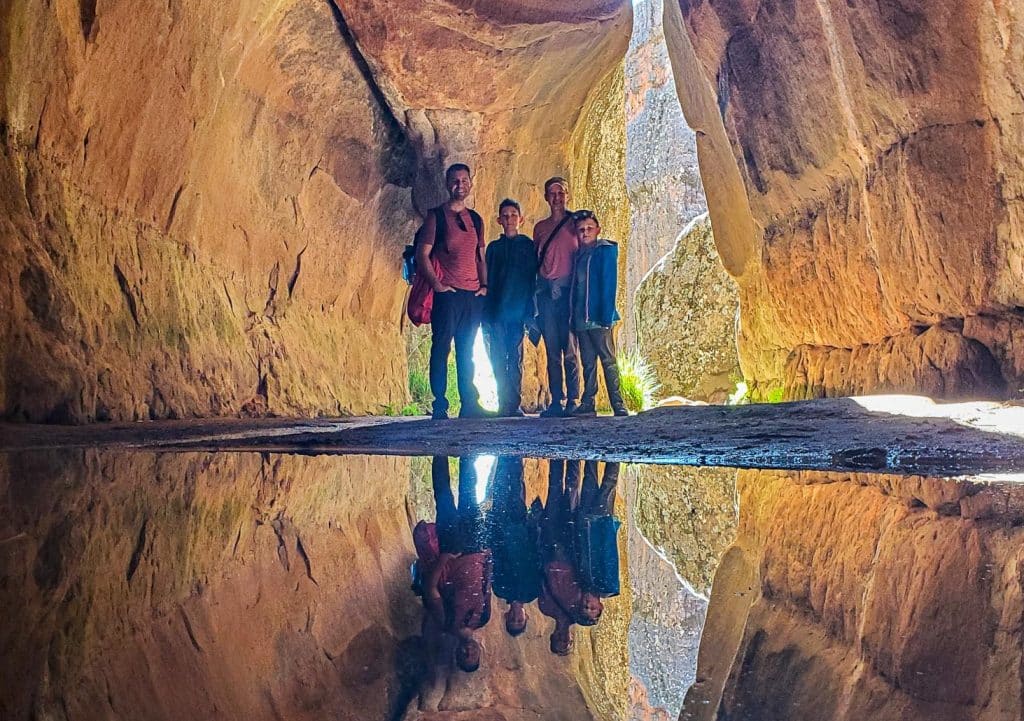
Bolivia challenged, delighted, and left us in awe—sometimes all in the same day. It pushed us out of our comfort zone, introduced us to jaw-dropping natural beauty, and gave us moments we’ll never forget.
If you’re a family looking for a destination that combines raw adventure with cultural richness, Bolivia just might surprise you. It certainly did for us.
Ready to Explore Bolivia?
Check out these related posts to help plan your trip:
• Family Guide to La Paz: A Flexible 5-Day Itinerary
• Breathless in Bolivia: Managing Altitude Sickness as a Family
• Travelling to the Amazon: An Adventure in Itself
• Exploring Bolivia’s Amazon: Pampas and Madidi National Park
• Chasing Jaguars in Bolivia: A Family Safari in Jaguarland
• Visiting Toro Toro National Park: Know Before You Go
• Bolivia’s Uyuni Salt Flats with Kids: A Family Adventure

